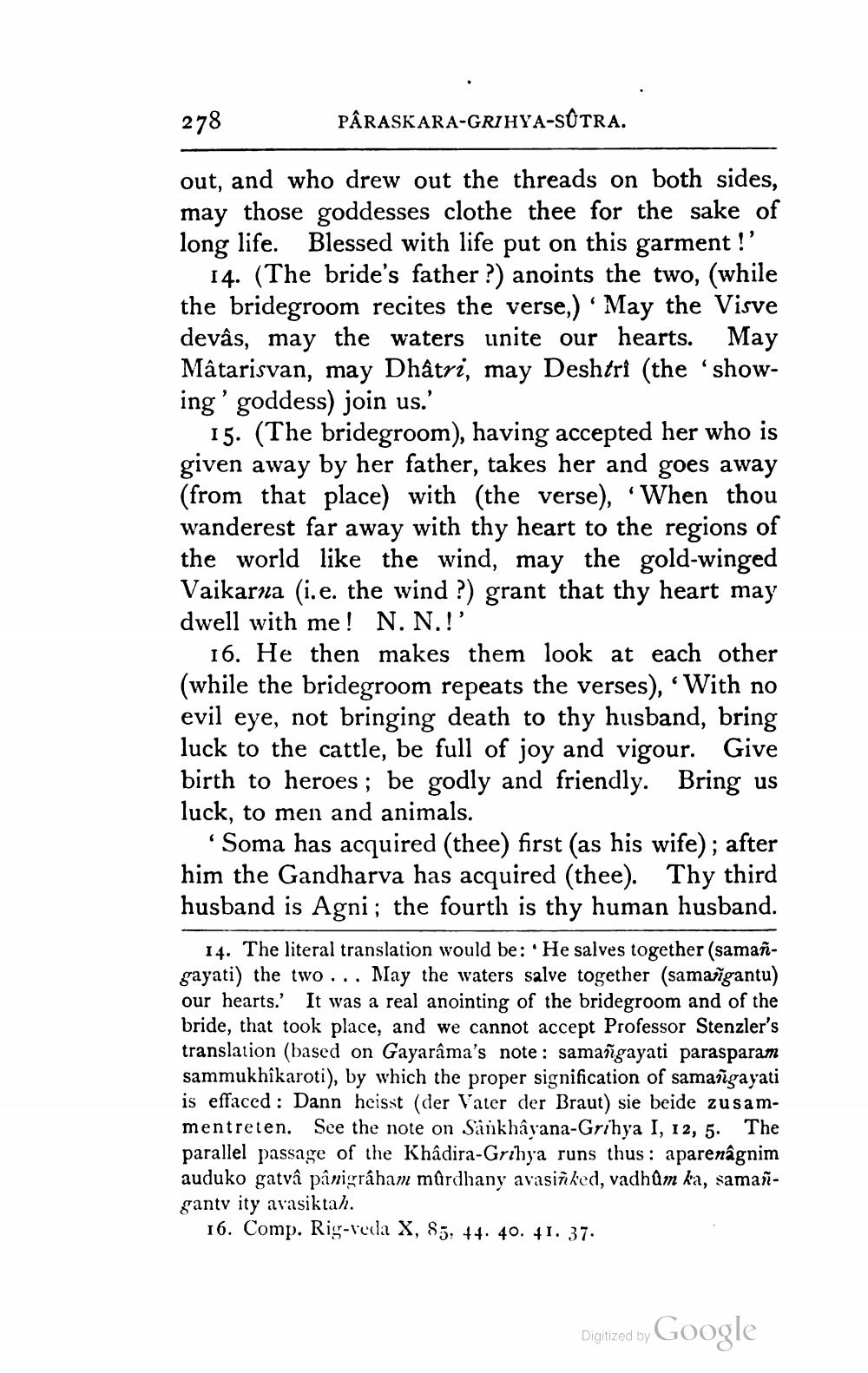________________
278
PÂRASKARA-GRIHYA-SÛTRA.
out, and who drew out the threads on both sides, may those goddesses clothe thee for the sake of long life. Blessed with life put on this garment !'
14. (The bride's father ?) anoints the two, (while the bridegroom recites the verse,) May the Visve devâs, may the waters unite our hearts. May Mâtarisvan, may Dhâtri, may Deshtri (the 'showing' goddess) join us.'
15. (The bridegroom), having accepted her who is given away by her father, takes her and goes away (from that place) with (the verse), When thou wanderest far away with thy heart to the regions of the world like the wind, may the gold-winged Vaikarna (i.e. the wind ?) grant that thy heart may dwell with me! N. N.!'
16. He then makes them look at each other (while the bridegroom repeats the verses), With no evil eye, not bringing death to thy husband, bring luck to the cattle, be full of joy and vigour. Give birth to heroes; be godly and friendly. Bring us luck, to men and animals.
'Soma has acquired (thee) first (as his wife); after him the Gandharva has acquired (thee). Thy third husband is Agni; the fourth is thy human husband.
14. The literal translation would be: 'He salves together (samangayati) the two . . . May the waters salve together (samañgantu) our hearts. It was a real anointing of the bridegroom and of the bride, that took place, and we cannot accept Professor Stenzler's translation (based on Gayarâma's note: samañgayati parasparam sammukhîkaroti), by which the proper signification of samangayati is effaced : Dann heisst der Vater der Braut) sie beide zusammentreten. See the note on Sånkhayana-Grihya I, 12, 5. The parallel passage of the Khâdira-Gríhya runs thus: aparenâgnim auduko gatvà pânigraham mûrdhany avasinked, vadhum ka, samangantv ity avasikta).
16. Comp. Rig-reda X, 85; 44. 40. 41. 37.
Digitized by Google




